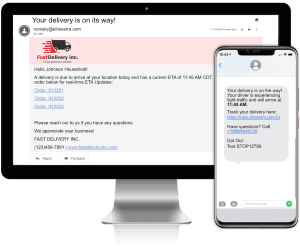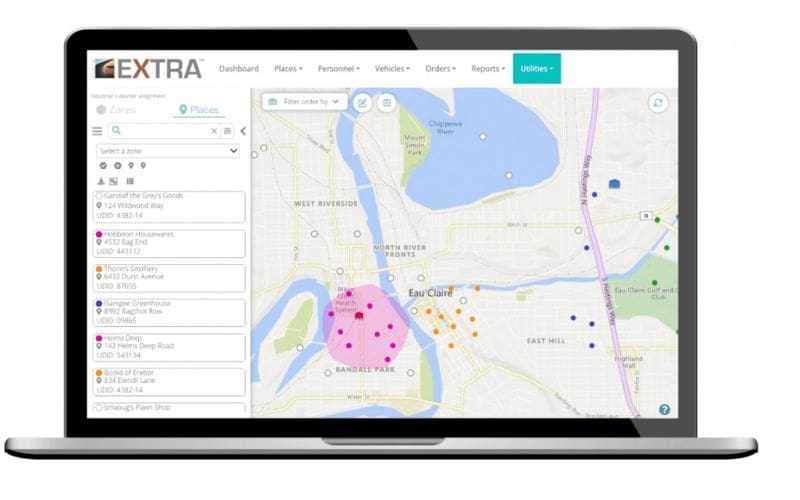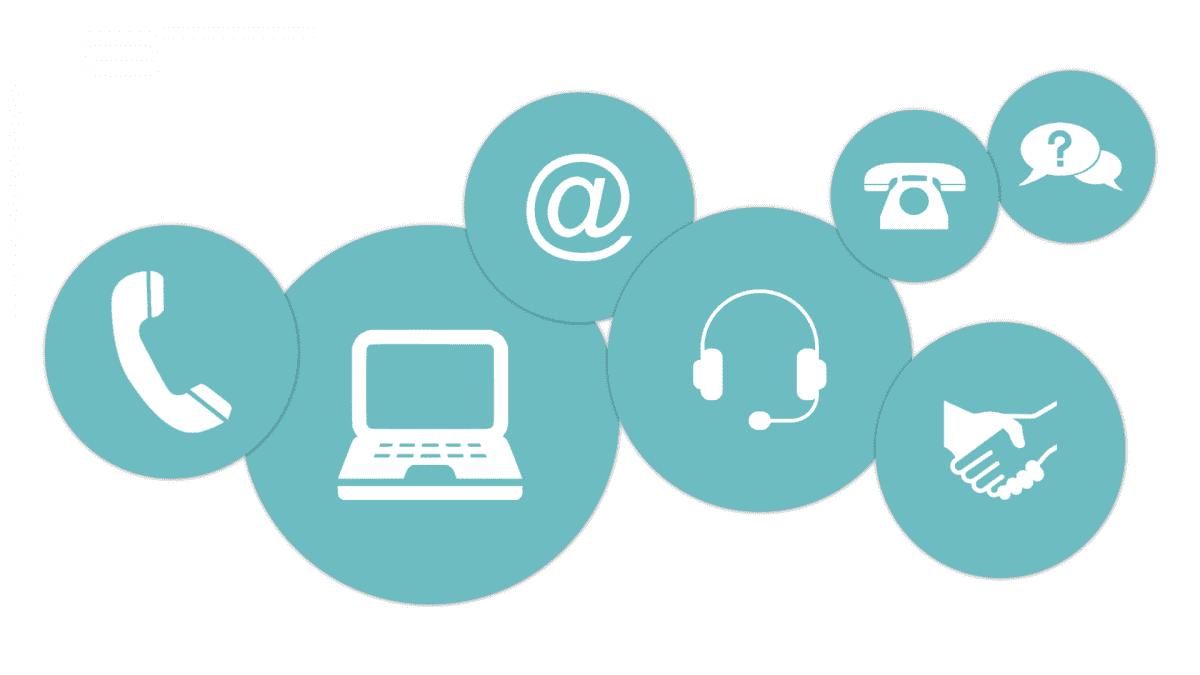
Daily routes are the backbone of any logistics or delivery operation, serving as the roadmap that guides your drivers through a maze of destinations, time constraints, and customer expectations. These routes are more than just a logistical necessity though; they symbolize a commitment to providing an exceptional experience for your loyal customers. Recognizing that these customers are the cornerstone of your business success, it becomes imperative to consistently offer them the best service. In this context, automating your daily routes is not merely a luxury but a crucial step toward enhancing customer satisfaction and maintaining their loyalty.
But automation is not a one-size-fits-all solution. It requires careful planning, the right technology, and a flexible approach to adapt to ever-changing conditions. In this comprehensive guide, we’ll walk you through the important steps for selecting the right route management software, setting up and managing your daily routes, and how to adapt them in response to real-world challenges and changing circumstances. Whether you’re a seasoned logistics manager or new to the game, this guide aims to provide actionable insights to elevate your route management strategy.
Automate Your Daily Routes: The Cornerstone of Efficient Logistics
Efficiently handling delivery routes poses its challenges, but an effective strategy begins with optimizing the routes you’re consistently making every day. Employing tools such as route optimization and automated dispatching can alleviate the workload for your teams, enabling them to focus on more demanding responsibilities. Additionally, the right automation tools has the potential to revolutionize your logistics operations, enhancing efficiency, reliability, and cost-effectiveness. When evaluating route management software, it’s crucial to consider key features that are indispensable to your operations. What you should consider when choosing route management software? Which key features are essential?
Selecting the Right Route Management Software
Choosing the right software is like picking the right vehicle for a long road trip. You need something reliable, efficient, and tailored to your specific needs. Here’s how to go about it:
- Research: Start by identifying the software solutions that are designed for your industry. Whether you’re in retail, automotive, or any other sector, the software should meet your unique requirements.
- Demo and Trial: Most reputable software providers, like Elite EXTRA, offer free demos or trial periods. Use this time to explore the software’s interface, ease of use, and functionality.
- Consult Your Team: Your drivers and logistics managers will be the primary users of the software. Involve them in the decision-making process to ensure that the software meets their needs and expectations.
- Scalability: As your business grows, your software should be able to grow with you. Look for solutions that offer scalable features and pricing plans.

Recommendations for Key Features to Look For
When evaluating software, focus on these must-have features:
- Real-Time Tracking: This allows you to monitor your fleet in real time, providing valuable data that can be used for immediate decision-making.
- Route Optimization: The software should automatically generate the most efficient routes, taking into account various factors like traffic, distance, and delivery windows.
- Customization: Every business is unique. The software should allow you to customize routes based on specific constraints, such as vehicle capacity or delivery time windows.
- Reporting and Analytics: Data is king. Comprehensive reporting tools can provide insights into your operations, helping you identify areas for improvement.
By considering these aspects, you’re investing in a solution that will drive your logistics operations into the future.
Managing Your Daily Routes: A Comprehensive Guide to Efficiency and Adaptability
When it comes to managing your daily routes, the inherent repetition can make it prone to simple errors. Integrating with automation software safeguards your business, minimizing the risk of such mistakes and enhancing the overall delivery experience for both your drivers and customers.
Following the integration of automation software into your business operations, the initial setup of routes is crucial. Ensuring accurate configuration from the outset lays the foundation for seamless management in the future. We’ve provided a detailed guide on how to manage your daily routes effectively, covering everything from setting them up to adapting them based on real-time data and changing circumstances.
Setting Up Your Daily Routes: A Step-by-Step Guide
- Initial Planning: Before even opening your software, have a clear understanding of your delivery requirements. Know the locations, time windows, and any special instructions for each delivery.
- Input Addresses: The first step in the software is usually entering the addresses of your delivery points. This can often be done in bulk through CSV uploads or API integrations.
- Route Optimization: Once the addresses are in, use the software’s route optimization feature to generate the most efficient routes. This usually involves complex algorithms that consider factors like traffic, distance, and time windows.
- Driver Assignment: After optimizing the routes, assign them to your drivers. Some software allows automatic assignment based on various criteria like driver availability or expertise.
- Final Review: Before finalizing, review the routes to ensure they meet any specific constraints or special needs, such as vehicle size limitations or priority deliveries.
Customization Options for Specific Needs and Constraints
- Time Windows: Time-sensitive deliveries are a common challenge in logistics. Most route management software offers a solution by allowing you to set specific time windows for each delivery. This ensures that your drivers arrive within the timeframe expected by the customer, enhancing satisfaction and reliability.
- Vehicle Constraints: Not all deliveries are created equal. Some may require specialized vehicles due to the size or weight of the items being delivered. Modern routing software allows you to input these vehicle constraints. This ensures that the system allocates the most suitable vehicle for each delivery, optimizing both efficiency and customer satisfaction.
- Priority Deliveries: In any logistics operation, there will be deliveries that require immediate attention due to their urgency or value. Route management software often includes features that let you flag these priority deliveries. By doing this, the system ensures that these critical shipments are placed higher in the routing sequence, guaranteeing timely delivery without compromising other operations.
Tracking Your Routes: The Power of Real-Time Monitoring
Real-time tracking has revolutionized the way we manage routes, offering benefits that extend from operational efficiency to customer satisfaction.

- Immediate Adjustments: Delays are almost inevitable due to factors like traffic jams or unexpected road closures. Real-time tracking allows for immediate adjustments to your routes. This ensures that one delay doesn’t create a domino effect, affecting the rest of your deliveries for the day.
- Customer Communication: One of the most significant advantages of real-time tracking is the ability to provide customers with accurate ETAs. This not only improves their experience but also boosts your ratings and reviews. In today’s competitive market, customer satisfaction can be your strongest differentiator.
- Driver Accountability: Real-time tracking is about the people delivering them. Knowing where your drivers are at all times enhances accountability, ensuring that schedules are adhered to. This real-time information can also be crucial for driver safety, allowing for quick response in case of emergencies.
Benefits of Monitoring Routes as They Progress
- Efficiency: Spot inefficiencies as they happen and reroute them to save time and fuel.
- Transparency: Real-time tracking provides a level of transparency that customers and stakeholders appreciate.
- Data Collection: The data collected can be invaluable for future planning and optimization.
Creating Reports: Data-Driven Insights for Optimizing Routes and Performance
- Performance Metrics: When it comes to route management, knowledge is power, and that knowledge comes from data. Utilize your software’s reporting tools to generate key performance metrics such as average delivery time, fuel consumption, and driver performance. These metrics serve as the pulse of your operations, giving you a snapshot of how well your system is functioning.
- Data Analysis: Once you have the metrics, the next step is to analyze them. Dive deep into this data to identify trends, bottlenecks, and areas that need improvement. This analysis is about understanding the story behind the numbers. It helps you pinpoint what’s working and what’s not, setting the stage for informed decision-making.
- Actionable Insights: Data and analysis are only as good as the actions they inspire. Turn your insights into actionable changes that can elevate your operations. This could range from retraining drivers who consistently underperform to tweaking their routes for better fuel efficiency. The goal is to make data-driven decisions that lead to tangible improvements in your route management strategy.
Adapting Routes: Staying Agile in a Dynamic Environment
The ability to adapt is crucial in logistics. Although your daily routes can be repetitive, they are still susceptible to change so it is important to be able to change things in a jiffy! Here are some strategies for dynamic route adjustments:
- Weather Adaptation: Use weather forecast data to anticipate delays and reroute proactively.
- Traffic Monitoring: Integrate real-time traffic data to avoid congestion and delays.
- Emergency Protocols: Have contingency plans for unexpected situations like road closures or vehicle breakdowns.
- Responsive Customer Service: Never underestimate the power of responsive customer service. Whether it’s a last-minute change in delivery requirements or addressing customer concerns in real time, having a responsive customer service team can be a lifesaver.
The Role of Software in Helping You Make Dynamic Changes
Modern route management software is designed to plan, track, and adapt. They come with features that allow for quick rerouting, sending alerts to drivers, and even automated customer notifications for new ETAs.
Managing your daily routes isn’t a set-it-and-forget-it type of deal. It requires ongoing attention and the right tools to adapt to an ever-changing environment. With the right software and strategies, you can turn this complex task into a competitive advantage.
Best Practices & Tips: Elevate Your Route Management Game
Managing daily routes is an ongoing process that requires constant attention, fine-tuning, and adaptation. Below are some best practices and tips that can help you excel in this crucial aspect of logistics management.
Regular Updates: The Importance of Fresh Data

Keeping your route data up-to-date is a top priority. Outdated information can lead to inefficiencies, delays, and increased operational costs. Here’s how to keep things current:
- Address Changes: Ensure that any new delivery locations are promptly added to your system. An outdated address can lead to failed deliveries and wasted time.
- Traffic Patterns: Traffic conditions can change due to various factors like construction or events. Update your routing algorithms to consider these changes.
- Seasonal Variations: Different seasons might bring different challenges, such as icy roads in winter or increased tourist traffic in summer. Update your routes to account for these seasonal changes.
- System Integrations: Use API integrations to automatically update data from other systems like inventory management or customer relationship management (CRM) software.
Driver Feedback: The Untapped Goldmine
Your drivers are on the front lines and can provide invaluable insights that you won’t get from any software. Here’s how to leverage their experience:
- Regular Check-ins: Have routine meetings or feedback sessions with your drivers to discuss any challenges or suggestions they may have.
- Incentivize Feedback: Offer incentives for constructive feedback. This could be in the form of bonuses, recognition, or even simple thank-you notes.
- Implement Changes: Take the feedback seriously and implement feasible suggestions. This not only improves your operations but also boosts driver morale.
- Feedback Loop: Create a system where drivers can easily report real-time issues or suggestions, perhaps through a feature in your route management software.
Test and Learn: The Cycle of Continuous Improvement
In logistics, what worked yesterday may not work tomorrow. Adopt a test-and-learn approach to stay ahead:
- A/B Testing: If you have multiple routes serving similar areas, try different strategies on each and compare the results.
- Performance Metrics: Use key performance indicators (KPIs) to measure the effectiveness of different routes and strategies.
- Iterate: Based on your findings, make the necessary adjustments to your routes. This could mean changing the sequence of stops, altering the time windows, or even reassigning drivers.
- Document Learning: Keep a record of what strategies worked and what didn’t. This documentation can be invaluable for training new team members or scaling your operations.
By incorporating these best practices and tips into your route management strategy, you’re building a robust, adaptable logistics operation capable of weathering whatever challenges come your way.
The Road Ahead: Mastering the Art of Route Management
In logistics and delivery services, automating your daily routes is no longer an option—it’s a critical requirement for staying competitive. The journey from selecting the right route management software to effectively managing and adapting your daily routes is filled with complexities. But, with the right strategies and tools, these challenges become opportunities for optimization and growth.
Regular updates, driver feedback, and a test-and-learn approach are actionable strategies that can significantly impact your bottom line. They enable you to be agile, responsive, and customer-centric, qualities that are indispensable in today’s fast-paced world. Data-driven insights and the ability to generate and act upon these insights can be the difference between a struggling operation and a thriving one.
Managing daily routes is a dynamic and ongoing task that demands both attention to detail and a willingness to adapt. It’s not just about getting from point A to point B; it’s about doing so in the most efficient, cost-effective, and reliable manner possible.
If you’re looking to elevate your route management game and are curious about how technology can aid in this endeavor, contact Elite EXTRA to discover how we can assist you in streamlining your daily routes for maximum efficiency and customer satisfaction.
Sources
https://web-and-mobile-development.medium.com/top-features-you-must-have-in-your-logistics-management-software-a8db5935be46
https://www.inboundlogistics.com/articles/ the-route-to-the-right-tms/
https://www.globaltrademag.com/ how-better-route-planning-reduces-risk-when-transporting-perishable-goods/







